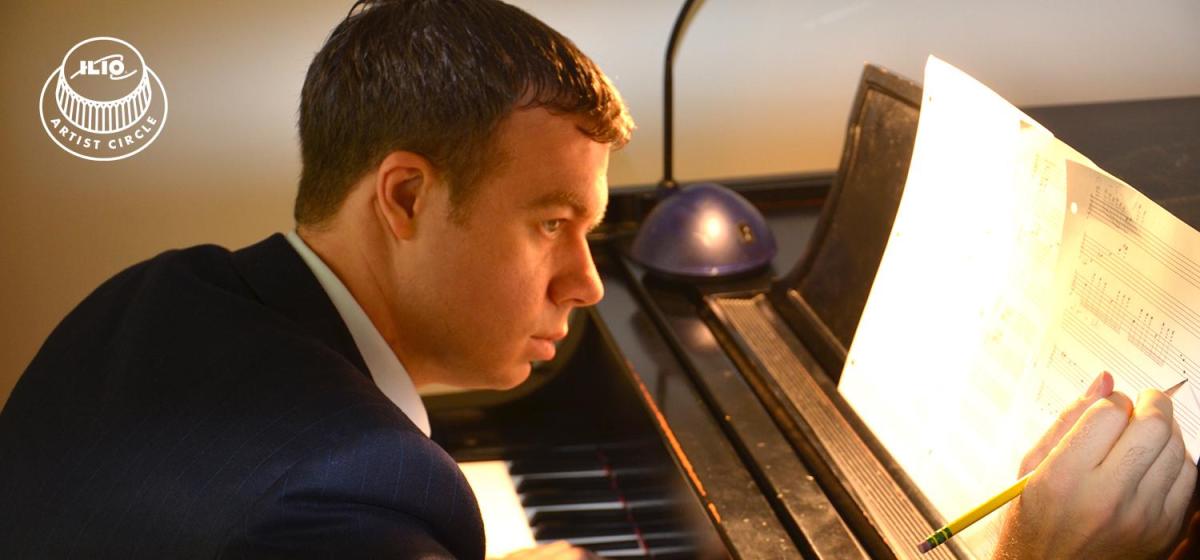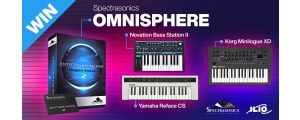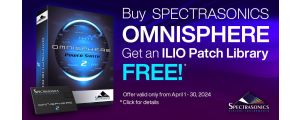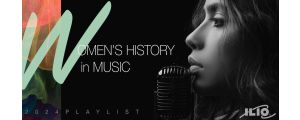Aaron Copland said, “I want to write music that shows what it felt to be alive in the 20th century.” I could say I want to write music that shows what it feels like to be alive in the 21st.
The 21st Century Composer
By Jerry Kovarsky
Wayne Oquin is by his own admission one of the least likely composers to be using technology to realize his compositions. He often writes at (and away from) the piano, putting pencil to paper. He doesn’t even own a MIDI keyboard, nor an iPad. But he has learned how music technology can aid a composer to fully realize their creations long before the piece gets its first rehearsal with the musicians who will perform it. And he uses Vienna Symphonic Library to achieve his goals, as we will learn shortly. But first, a short introduction:
Oquin is among the most performed American composers working today. A native of Houston, Texas, his music has been premiered on five continents, twenty-one countries, and in forty-five states, by organizations such as The Danish National Symphony, The Munich Philharmonic, The Pacific Symphony, and The Philadelphia Orchestra, as well as by The King's Singers, pianist Marc-Andre Hamelin, and Grammy Award-winning organist Paul Jacobs. He has studied composition with Milton Babbitt and Samuel Adler, received his bachelor’s in composition and piano at Texas State University, and both his Master’s and Doctorate of Musical Arts from Juilliard School in New York. The school awarded Oquin its coveted Richard F. French Prize for best dissertation, appointing him to its faculty, where as Chair of the Ear Training department he teaches many day and evening classes, plus courses on Beethoven and the major 20th-century American symphonic works.
To me the creative process is a mystery. There’s no formula for how to do it… it’s an endurance test. The story of every piece is how do I get from my piano to my pencil and paper, to VSL, to onstage with a full symphony orchestra.

The Art of Composition
Wayne Oquin is a dedicated, thoughtful composer who understands that there are no shortcuts to the art of music: it is a craft that deserves, no demands your full attention and commitment. “Sometimes what is on the page is only two notes… one trichord, one dyad. But what that will become, fleshed out is quite another experience”, he relates. “My best music comes from revisiting a piece time and again. And the clearer my ideas, the pickier I become. It’s a very slow process. I’m staring at the page more than writing.” Over time he learned that by adopting some technology into his workflow he could better understand what was working in his writing and arranging, and what needed adjusting, or even re-evaluation.
Starting early on with (Make Music) Finale, and then moving to using (Avid) Sibelius, he was happy to be able to produce high-quality scores and parts for his pieces. But he was wholly unsatisfied with the playback quality he was getting, and had accepted that he could only produce the written score, and no more. Until he was speaking with a colleague at Juilliard about that compromise, and they said in no uncertain terms, “you need to try VSL.” So Oquin reached out to ILIO and got started with Vienna Symphonic Library Special Editions 1 and 2, along with their expanded articulation packages (1 Plus and 2 Plus). “It changed my world,” he said. “I was so pleased not only with the playback, but how it made the decisions I was able to make so much more informed, hearing my writing coming back so lifelike. I work slowly and carefully, and like to listen to things over and over, and now what I was getting back was superb. So I made better decisions that I could trust.”
Oquin shares some of his experience: “Sometimes things that sound the best on the piano don’t translate well to other instruments. And yet some passages that are not so pianistic can be devoured by an orchestra.” “Because of VSL’s integration with most notation software it puts orchestration, color and timbre earlier in the compositional process”, he states. And it helps to solve the biggest obstacle modern orchestral composers face: the limited time they get to rehearse and hear their works before their first performance. “The vast majority of composers have to wait a long time before they can hear live musicians play back their work. Vienna changes all of that. It’s an immediate high-quality representation of what I’m going after.”
There is nothing more exciting than hearing a world-class orchestra rehearse a new piece for the first time. That magic moment of the piece coming to life…
His Process
Wayne often writes at the piano, or not at an instrument at all, and is still most comfortable with putting pencil to paper when exploring fledgling motifs and passages. But he is quite adept at using Sibelius, and will start with it when he is already clear about a passage he is working on.
He explains, “When I’ve got the notes and passages entered into Sibelius I spend a lot of time shaping the phrasing and the dynamics of the playback. The time spent on this aspect is invaluable to me. As I work through a piece, listening carefully, I am always going in and putting small dynamic markings to guide the playback performance of a phrase, and I hide those so they’re not visible in the score/part, but I’m telling VSL how I want the phrase to sound exactly. I can balance the sections of the ensemble to such a fine degree that it influences the creative direction.”

Oquin relates a specific example of what using VSL has done for him: “If there’s one piece I could not have lived without it, it would be with my organ concerto, Resilience. The potential balance problems for an organ and an orchestra are enormous. To (be able to) pair the Vienna Konzerthaus organ with the VSL orchestra I was able to truly balance those out. I never had to make any revisions for any of the performances.”
Being able to create full mock-ups of his works doesn’t only aid Oquin, it also is a boon to the conductors who are choosing to schedule and perform his works. John Lynch, the Director of Bands and Conducting Professor at the Sydney Conservatorium of Music has worked with Wayne on multiple occasions. He enthuses, “What’s really helpful with Wayne’s music is when I receive a score I also get an audio file. Wayne’s audio files are amazing; they sound so true to the actual instruments. And it really helps us as conductors in our aural image to figure out what this piece is going to sound like with a real, living and breathing ensemble.”
In the classical world, I think there is definitely a stigma around technology. What we have to remember is that every piece that’s ever been written in any time was a product of its generation. Composers used the materials and techniques that were available to them at that time to produce the best music possible.

Summing Up
Oquin shares some final viewpoints, “Notation is always approximate. Even the pickiest composers: Mahler, or Beethoven… those two were known to be particularly precise; their scores are still only an approximation of what they likely intended. But when you can produce a mock-up like you can with VSL, you can go beyond just the notes on the page to convey to the prospective performer the excitement of what you were hearing in your head, and it can be shaped to your satisfaction to the nth degree. Working with VSL has made everything I write better… there’s no greater praise I can bestow on it.”
To learn more about Wayne Oquin visit here. Listen to some of his works here.
For more info on Vienna Symphonic Library click here.
Vienna Symphonic Library is exclusively distributed in North and South America by ILIO.
Written by Jerry Kovarsky
Jerry Kovarsky is a music industry veteran who has worked as a product/brand manager, marketing director, product developer and demonstrator for Korg, Ensoniq and Casio over a 30-plus year career. An accomplished keyboardist/synthesist, Jerry has been a passionate advocate for making music with keyboards and likes to live at the intersection of technology and art. He is the author of Keyboard For Dummies, and writes a long-running monthly column on synth soloing in Electronic Musician Magazine, as well as monthly blog columns on keyboard musicianship for Yamaha and Modal Electronics.






